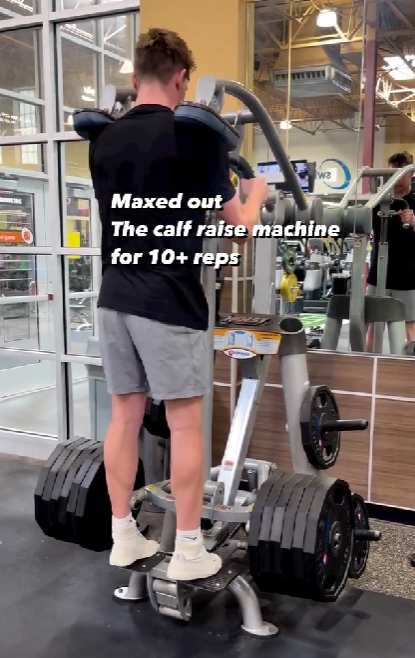
In October 2019 I paid £32 ($37) to access Jump Science 2.0. This was 18 months into my efforts to dunk, having previously completed Vert Shock, the Vertical Jump Bible and a jump program from a T-Nation article.
The previous programs had already helped my vertical increase from 23 inches to almost 27 inches. That meant Jump Science 2.0 was at a disadvantage in that I wasn’t coming into it as a complete beginner. This review covers my own experience on the program as well as an overview of the layout and exercise selection.
Finding Your Level
One immediate feature that stood out is the fact that Jump Science 2.0 isn’t one program – it’s six. The author, Daniel Back, isn’t trying to create a program for all ability levels, and instead you must “find your level”. So what does finding your level involve?
The three tests that determine your level are a goblet squat, maximum full squat and maximum running vertical jump. These are factored in using the following flow chart.
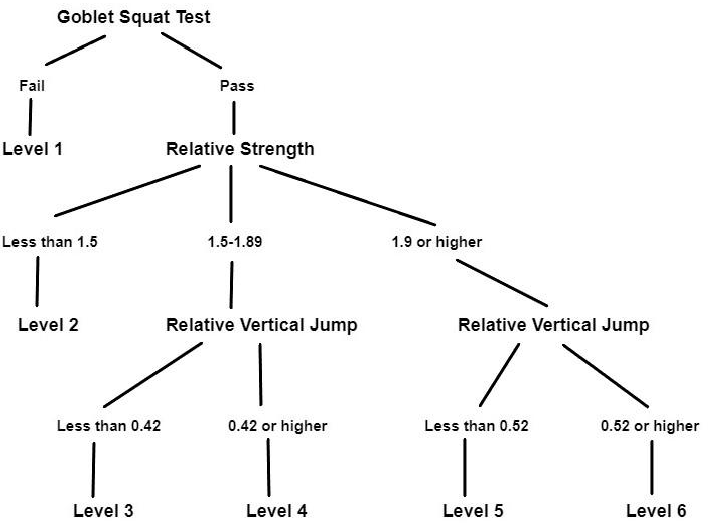
Level 1: The goblet squat is a basic pass/fail to test beginner strength levels and flexibility. If you can do a single goblet squat holding 25kg then you can progress to the next test. If not, you only qualify for level 1.
Level 2: If you passed the goblet squat test, you can then perform a maximum squat for a single rep. The numbers are relative strength, meaning you divide by your own body-weight. Less than 1.5 means your maximum squat is less than 1.5 times your own body-weight. If you weigh 80kg (175lbs) this would mean a squat less than 120kg (265lbs).
Levels 3 and 4: You only qualify for levels 5 or 6 if you can squat 1.9 times your body-weight to depth (or higher). Using our 80kg individual, that would be a 152kg (335lb) squat. If your relative squat falls between 1.5 and 1.89 times body-weight, your level is determined by your vertical jump. Again, this is a relative vertical jump, meaning you divide by height. If our 80kg individual was 183cm (6’0) they would need a vertical jump of 77cm (30.3″) for level 4, otherwise they’re doing level 3.
Levels 5 and 6: For those with a relative squat 1.9 times their body-weight or higher, they qualify for one of the top two levels. This time a relative vertical jump of 0.52 is needed for level 6. For an 183cm (6’0) person this would mean a vertical jump of 95cm (37.5″), which is quite an elite vertical jump.
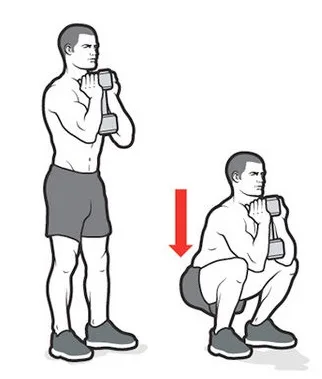
So what was my level?
I passed the goblet squat test and my 120kg squat at a body-weight of 73kg left me with a relative squat of 1.64 times body-weight. My vertical going into this was 68cm at a height of 177cm (0.38x), which meant I qualified for Level 3.
I will talk about my experience of level 3 but will briefly discuss the contents of all available programs. I should note that every program is designed with a 3 day template, ideally non-consecutive days, such as Monday, Wednesday and Friday. There is also a daily routine which includes 10 different stretches and isometric holds. This remains constant across all weeks and features in every program.
Jump Science 2.0 – Level 1
As level 1 is for someone who doesn’t possess a basic level of strength and flexibility, this six week program is designed with those two things in mind.
The main program includes squat variations in the 4-6 rep range, short sprints, some direct calf training and basic upper body moves like pull ups and push ups. Week 4 introduces a jump session with a minimum of 20 jumps, both single foot and two-footed. Week 6 involves the Goblet Squat test, and if you pass it, an assessment of your maximum squat.
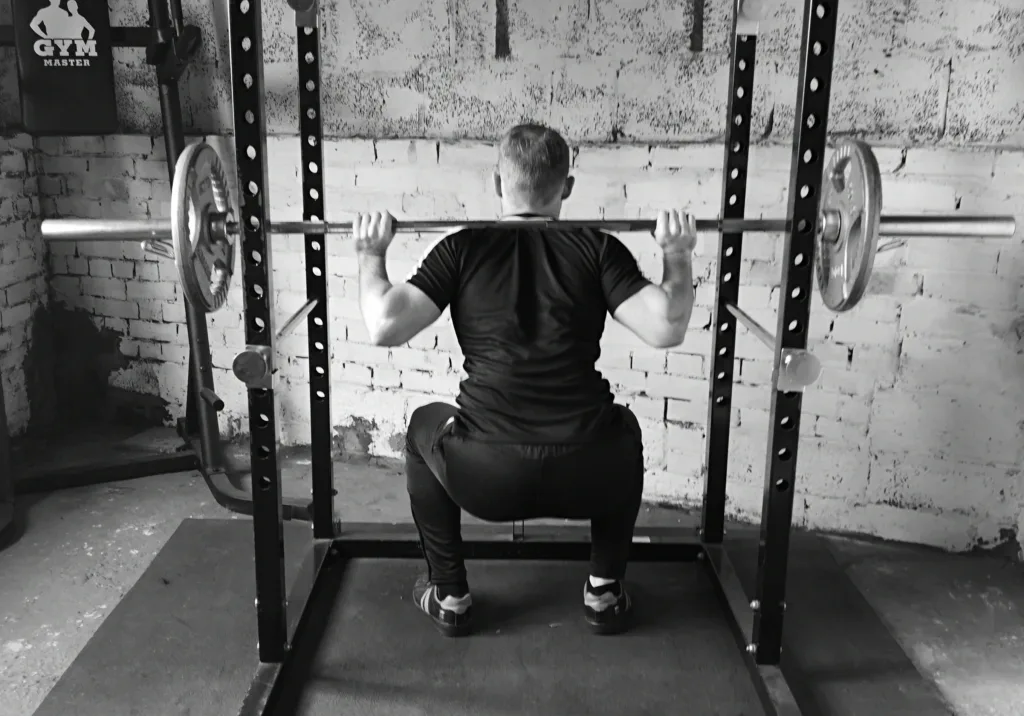
Jump Science 2.0 – Level 2
The first 11 weeks of level 2 focus on strength development. There is then an optional final four week phase aimed at maximising jump height.
In the main program you can find squat variations, jump sessions and basic conditioning runs. An example week would include deep squats, single leg squats, sprinting, step ups and lunge variations. There are more multiple jumps from week 8, such as repeat broad jumps, hops or tuck jumps. For those who were making solid progress, there’s the option to repeat weeks 5 to 11. Otherwise, the final four weeks see a reduction in training volume, allowing for a peak performance in the vertical jump test.
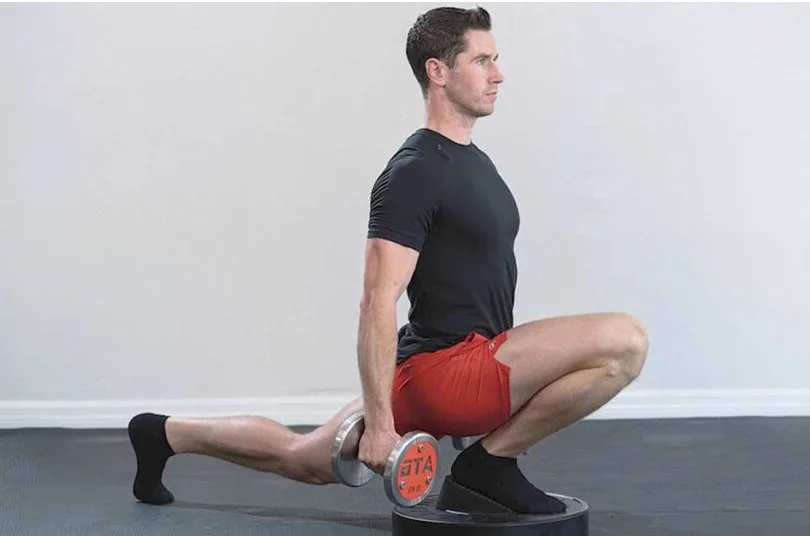
Jump Science 2.0 – Level 4
I’ll go through level 3 at the end, as that’s the one I did in full. In level 4 the athlete has a decent vertical jump and is perhaps lagging behind in raw strength. The focus of this program is therefore more geared towards improving their relative squat strength to 1.9 times body-weight.
One of the three days sees you do up to 8 sets of 5 squats in the main program, and 12 singles on the deadlift in another. Sprinting features with around 160 metres of total top speed running, for example 8 x 20 metre sprints with several minutes rest. As with level 2, those making solid progress in strength can repeat weeks 5 to 11. The final six weeks of the program involves tapering off the strength training. You are introduced to some more advanced exercises like clean pulls and drop jumps.
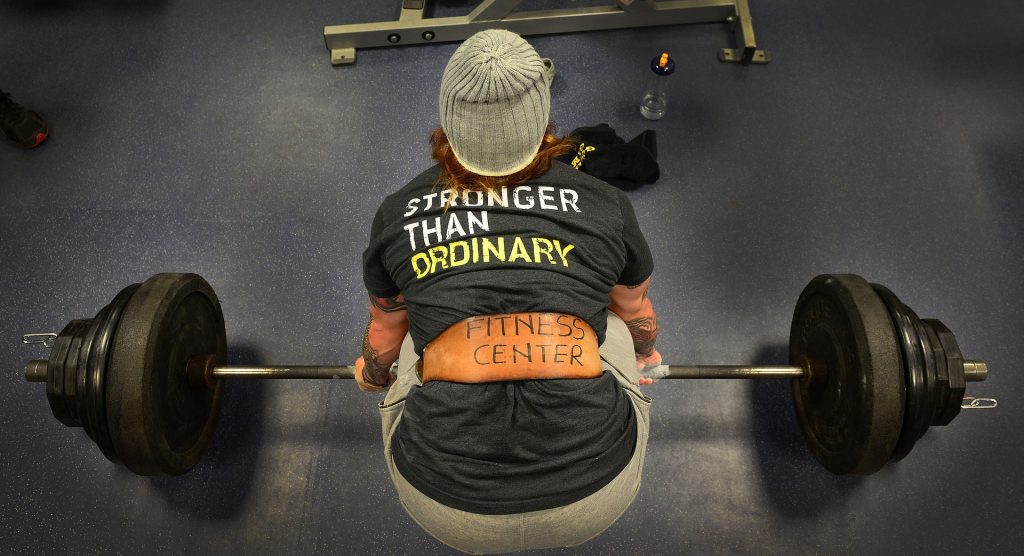
Jump Science 2.0 – Level 5
Athletes in level 5 are perfectly strong but lack the ability to transfer that strength to vertical jump height. They need to focus on explosive movements and elasticity.
As you can imagine, that means more emphasis on jumping, hopping, bounding and overall plyometric exercises. After completing level 3 I was dismissive of level 5, but on reflection it would have helped me a lot. The reason I was against it was the focus on sprinting, something I had done at University and hadn’t left me with much of a vertical.
What I really needed was the other exercises – the drop jumps, repeat broad jumps, pogo jumps, tuck jumps, lunge jumps and the jump session itself. The other thing I needed was to back off the strength training. Sometimes an athlete can be so precious about their strength they refuse to go 4-6 weeks without training it, even though that can be exactly what they need to see results.
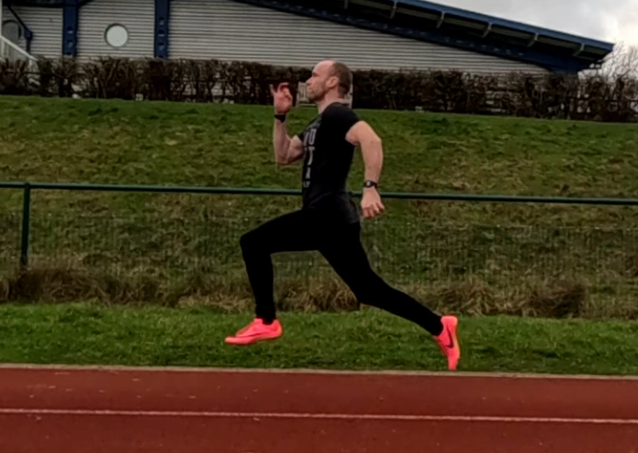
Jump Science 2.0 – Level 6
The final level of Jump Science 2.0 is a 21 week program. Qualifying for it means you’ve already reached a high level of strength (1.9x squat) and athleticism (0.52x vert). Exercises like straight and bent leg calf raises, clean pulls, sprinting and drop jumps feature throughout. There are periods within level 6 with greater emphasis on strength. Here you’ll see deadlift singles, and back squats where the rep range comes down as the weeks progress.
After week 14 there is a 7 week taper, with only the jump sessions remaining in the final week.
The final section will be my own experience of level 3 and some thoughts on why I didn’t get the results I desired.
Jump Science 2.0 – Level 3
It’s taken me a few years to write this up, and in that time the original program has been updated. It was originally a 10 week program, the entirety of which you can see in my training log. There are many similar exercises in the updated version, such as depth drops, box squats, line hops and rhythmic jumps, but also some notable differences.
I was doing overhead squats and deadlift singles for most of the level 3 program, neither of which feature in the new edition. Instead, there are clean pull singles, an exercise with far more emphasis on explosive power.
There was also a complete rest in week 7, which no longer exists. Instead, level 3 is now 15 weeks long, with a similar layout to levels 4 and 5. Below you can see which exercises feature in the first week of the original vs. updated level 3 program.

Why Didn’t I Jump Any Higher?
I came into the program with a 26.75 inch vertical and left with a 26 inch vertical. So what happened? There are five reasons which I feel explain almost all of the effect:
- Too much weight training. The program I followed was supposedly catering to athletes who have decent strength and trouble translating that to jump height. On reflection, the volume of box squats and deadlift singles in weeks 1 to 6 were excessive given my strength base. It would have been better to do maintenance lifts while doubling down on reactive training. Note: The updated level 3 program has far less emphasis on heavy lifting.
- A full week of rest in week 7. A typical deload should involve maintaining the intensity but cutting the volume in half. The program at the time asked you to stop exercising for 7 days. This will have led to a detraining effect as I hadn’t built up sufficient training stimulus to warrant a full week of rest. This is apparent when you see my weekly countermovement jump heights.
- Poor execution of depth jumps. I cringe a little at my original video, where I was doing depth jumps on grass with a deep knee bend. They should be very reactive, spending no more than 0.2 seconds on the floor. My ground contact time was so long that I was basically executing a standing jump.
- Poor execution of flying sprints. I didn’t have access to an athletics track and chose to do these on a rugby pitch in boots, where the ground is uneven. My 30m time on grass was around 3.80 seconds. By comparison, on a track in sprint spikes I’m capable of closer to 3.45 seconds. It’s hard to train reactive ability of the muscles on a soft surface!
- Jump technique. Across the years of jump training, what led to my breakthrough 30 inch vertical was designing a program around jump practice. While I was improving every month, the technique I had at the end of Jump Science 2.0 left a lot to be desired. It was great that level 3 had jump practice, but I needed to break the movement down to learn each component before stringing it all together.
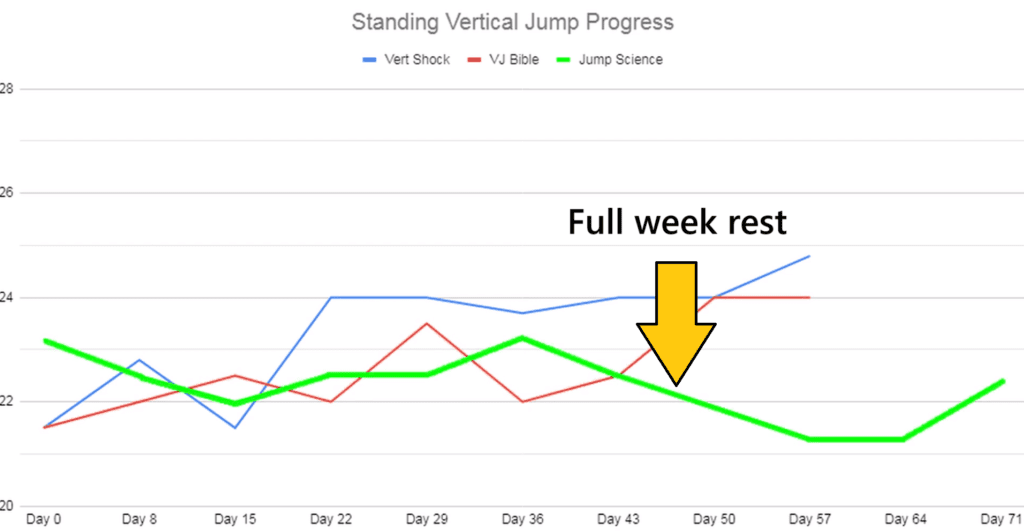
If I had executed all the movements correctly I believe I would have made a small gain following the original program. Reading through the updated level 3 program I feel like that would have translated to another several inches on my best vertical jump.
Should You Buy A Jump Science Program?
The marketing has evolved a lot since I snapped up six programs for $37. The current offering appears to map as follows:
- Level Up Program ($50): This program is for athletes who squat less than 1.4 times body-weight. In the original program, this is Level 2.
- PhD Program ($50): This program is for athletes whose strength and jump ability seem well balanced. In the original program, this is Levels 4 and 6.
- Shift Program ($50): This program is for athletes who can’t translate their strength to jump ability. In the original program, this is Levels 3 and 5.
From purchasing six programs for $37, you now need to spend $150 to access five of them. The programs themselves seem well put together so athletes should see results if they follow it correctly. My knowledge of jump training has evolved so much since 2019 and reading through these programs the author clearly has a lot of knowledge on the topic. All the right exercises seem to be included, and those have clear progressions across the weeks.
I can see some positives, like including straight and bent leg calf raises. I follow John Evans on Instagram, who runs THP Strength, and he stresses the importance of both types of calf raises in a good jumps program. The two movements are very important to reduce the risks of the all to common Achilles injury.
I can also see some negatives, which make me hesitant to go recommending the program to everyone. Most programs see you sprinting flat out in week 1. With a background as a sprinter I consider this very dangerous if it’s not something already in your program. Top speed sprinting should be done fresh, yet it’s often scheduled 48 hours after weight training. Lingering muscle soreness and top speed running are a recipe for injuries. It’s also something you should build up gradually to over weeks of training.
Ultimately I would say they’re a decent collection of programs, though there will be better ones out there. If you’re not breaking the bank to spend $50 then it’s probably worth trying one out.
For those interested in seeing my results from the original level 3 program, here’s my YouTube video from 2019.

